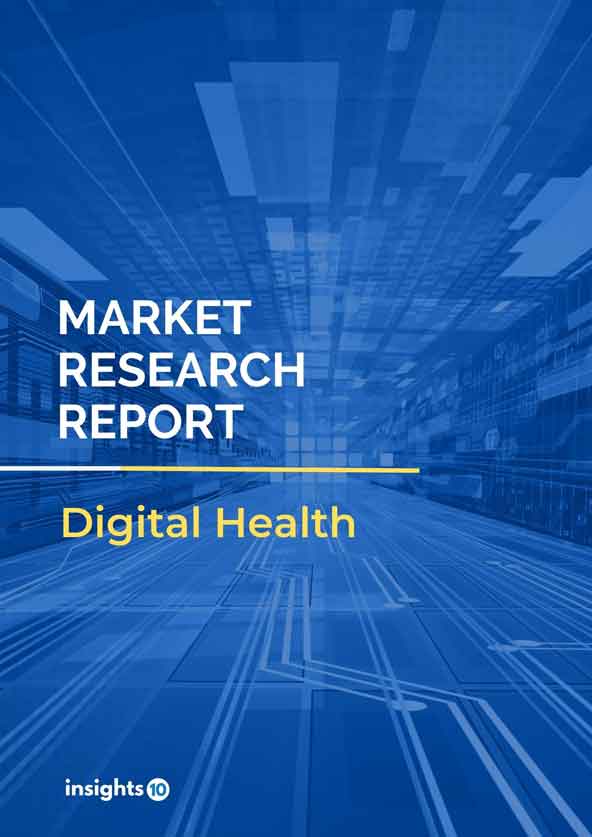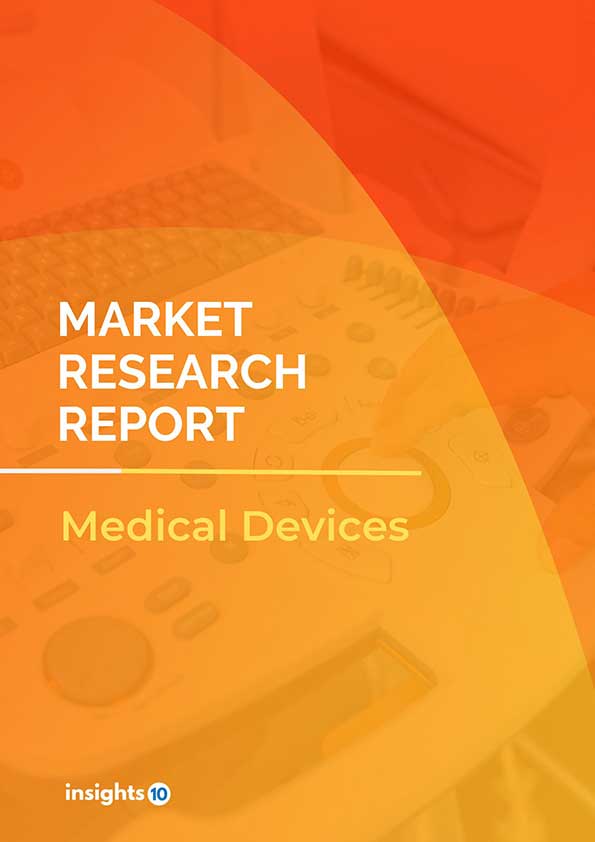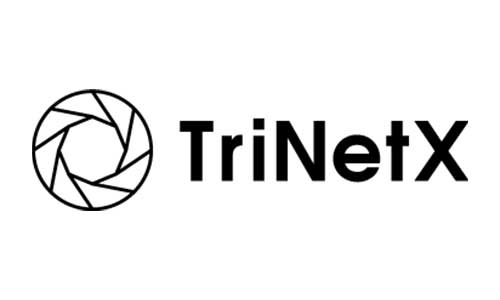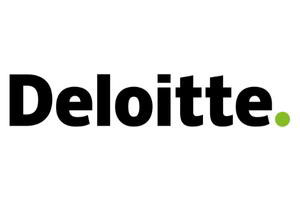South Africa Digital Health Market Analysis
South Africa's Digital Health market is projected to grow from $xxBn in 2022 to $xxBn by 2030, registering a CAGR xx% during the forecast period of 2022-30. The market will be driven by the growing demand for improved access to healthcare services and government support for digital health. The market is segmented by solution, by deployment & by end-use. Some of the major players include Philips, GE HealthCare & Altron.
Buy Now

South Africa Digital Health Market Executive Summary
South Africa's Digital Health market is projected to grow from $xxBn in 2022 to $xxBn by 2030, registering a CAGR xx% during the forecast period of 2022-30. The health expenditure per capita for South Africa declined from $564.5 in 2018 to $546.7 in 2019, while the healthcare expenditure % of GDP rose from 8.86% in 2018 to 9.11% in 2019 according to the World Health Organization Global Health Expenditure database. This spending is inclusive of both public and private spending on healthcare. The government funds the majority of the public healthcare sector in South Africa, while the private sector is financed by a blend of private health insurance and out-of-pocket expenditures by citizens.
Digital health is being accepted and utilized in different ways in South Africa, including telemedicine, electronic health records (EHRs), mHealth, and eHealth. The South African government has made efforts to encourage and assist the development of digital health technologies, such as by implementing a national health information system and telemedicine services in public health institutions.
MomConnect is a platform established by the National Department of Health in collaboration with public and commercial entities. MomConnect had shown to be effective in teaching and motivating women to care for themselves and use available prenatal and postnatal services throughout and after pregnancy. As of March 31, 2019, more than 2.5 million moms were enrolled with MomConnect. Another notable mHealth application is the Stock Visibility System (SVS), which is used as an electronic stock management system in clinics and hospitals.
Market Dynamics
Market Growth Drivers
South Africa's government has set up a national health information system and telemedicine services in public health institutions, while private hospitals and clinics have also incorporated electronic medical records and telemedicine. The expansion of digital health in South Africa intends to alleviate the dearth of healthcare facilities and workers in remote regions, as well as to enhance access to excellent healthcare for all. Moreover, the market is also being led by the need to increase the availability of healthcare in rural regions, rising smartphone and internet usage, government backing for digital health initiatives, and private sector investment in the digital health market.
Market Restraints
The adoption of digital health solutions is hampered by a lack of suitable digital health infrastructure. Many healthcare professionals are unable to afford digital healthcare due to the high cost of technology. Data security and privacy are also key issues, as digital health systems sometimes include the keeping of sensitive personal health information. In remote locations, poor internet access can also hamper the development of digital healthcare initiatives. Furthermore, many healthcare professionals may be cautious to accept new digital health technology, resulting in delayed adoption and market development. In South Africa, the absence of clear standards and norms for digital health solutions can generate confusion for both healthcare practitioners and patients.
Competitive Landscape
Key Players
- Philips: A worldwide health technology leader that provides digital health solutions for telemedicine, imaging, and patient monitoring
- GE Healthcare: A leading provider of medical imaging, health monitoring, and digital health solutions throughout the world
- Siemens Healthineers: Global medical technology firm that provides a variety of digital health solutions such as telemedicine, remote monitoring, and e-health services
- IBM: IBM Watson Health is a division of IBM that offers a variety of digital health solutions including EHR, population health management, precision medicine, medical imaging, and virtual health through AI and other advanced technologies
- Altron (ZAF): Altron has created a variety of critical proprietary platforms and solutions that help the industry manage healthcare
- Vitls (ZAF): Manufacturer of a wearable gadget for remote monitoring of patients. It provides a cloud-based vital sign monitoring platform that measures body temperature, pulse rate, and other parameters in real-time
Healthcare Policies and Regulatory Landscape
South African Health Products Regulatory Authority (SAHPRA) governs the registration and monitoring of pharmaceuticals, medical devices, and clinical trials including the software required for digital health. National Health Information System Authority (NHISA) - Sets and administers a national health information system, including Electronic Health Records (EHRs) and telemedicine platforms, to improve healthcare efficiency and quality.
In collaboration with other government departments, the National Digital Health Strategy for South Africa, 2019-2024 will enhance digital health systems of governance, create strongly integrated platforms for the advancement of information systems, and build the necessary telecommunications infrastructure.
Reimbursement Scenario
In South Africa, National Health Insurance (NHI) Provides a national health insurance program to ensure universal access to excellent healthcare. The reimbursement for digital health is currently limited and underdeveloped. The South African healthcare system is normally supported by a combination of private health insurance and state health funding, however, coverage for digital health services such as telemedicine and mHealth is restricted.
1. Executive Summary
1.1 Digital Health Overview
1.2 Global Scenario
1.3 Country Overview
1.4 Healthcare Scenario in Country
1.5 Digital Health Policy in Country
1.6 Recent Developments in the Country
2. Market Size and Forecasting
2.1 Market Size (With Excel and Methodology)
2.2 Market Segmentation (Check all Segments in Segmentation Section)
3. Market Dynamics
3.1 Market Drivers
3.2 Market Restraints
4. Competitive Landscape
4.1 Major Market Share
4.2 Key Company Profile (Check all Companies in the Summary Section)
4.2.1 Company
4.2.1.1 Overview
4.2.1.2 Product Applications and Services
4.2.1.3 Recent Developments
4.2.1.4 Partnerships Ecosystem
4.2.1.5 Financials (Based on Availability)
5. Reimbursement Scenario
5.1 Reimbursement Regulation
5.2 Reimbursement Process for Diagnosis
5.3 Reimbursement Process for Treatment
6. Methodology and Scope
Digital Health Market Segmentation
The Digital Health Market is segmented as mentioned below:
By Solution (Revenue, USD Billion):
- Software
- Services
By Deployment (Revenue, USD Billion):
- Cloud-based
- On-premises
By End-use (Revenue, USD Billion):
- Diagnostic Centres
- Healthcare Payers
- Healthcare Research Centres
- Hospitals & Clinics
- Nursing Care Centres
- Others
Methodology for Database Creation
Our database offers a comprehensive list of healthcare centers, meticulously curated to provide detailed information on a wide range of specialties and services. It includes top-tier hospitals, clinics, and diagnostic facilities across 30 countries and 24 specialties, ensuring users can find the healthcare services they need.
Additionally, we provide a comprehensive list of Key Opinion Leaders (KOLs) based on your requirements. Our curated list captures various crucial aspects of the KOLs, offering more than just general information. Whether you're looking to boost brand awareness, drive engagement, or launch a new product, our extensive list of KOLs ensures you have the right experts by your side. Covering 30 countries and 36 specialties, our database guarantees access to the best KOLs in the healthcare industry, supporting strategic decisions and enhancing your initiatives.
How Do We Get It?
Our database is created and maintained through a combination of secondary and primary research methodologies.
1. Secondary Research
With many years of experience in the healthcare field, we have our own rich proprietary data from various past projects. This historical data serves as the foundation for our database. Our continuous process of gathering data involves:
- Analyzing historical proprietary data collected from multiple projects.
- Regularly updating our existing data sets with new findings and trends.
- Ensuring data consistency and accuracy through rigorous validation processes.
With extensive experience in the field, we have developed a proprietary GenAI-based technology that is uniquely tailored to our organization. This advanced technology enables us to scan a wide array of relevant information sources across the internet. Our data-gathering process includes:
- Searching through academic conferences, published research, citations, and social media platforms
- Collecting and compiling diverse data to build a comprehensive and detailed database
- Continuously updating our database with new information to ensure its relevance and accuracy
2. Primary Research
To complement and validate our secondary data, we engage in primary research through local tie-ups and partnerships. This process involves:
- Collaborating with local healthcare providers, hospitals, and clinics to gather real-time data.
- Conducting surveys, interviews, and field studies to collect fresh data directly from the source.
- Continuously refreshing our database to ensure that the information remains current and reliable.
- Validating secondary data through cross-referencing with primary data to ensure accuracy and relevance.
Combining Secondary and Primary Research
By integrating both secondary and primary research methodologies, we ensure that our database is comprehensive, accurate, and up-to-date. The combined process involves:
- Merging historical data from secondary research with real-time data from primary research.
- Conducting thorough data validation and cleansing to remove inconsistencies and errors.
- Organizing data into a structured format that is easily accessible and usable for various applications.
- Continuously monitoring and updating the database to reflect the latest developments and trends in the healthcare field.
Through this meticulous process, we create a final database tailored to each region and domain within the healthcare industry. This approach ensures that our clients receive reliable and relevant data, empowering them to make informed decisions and drive innovation in their respective fields.
To request a free sample copy of this report, please complete the form below.
We value your inquiry and offer free customization with every report to fulfil your exact research needs.









































